Build Your Skills
Learn music theory Train your ears Track your tempoRead Now
Get the Newsletter
Categories
- | BeatMirror (10)
- | HearEQ (11)
- | Waay (22)
- | WaayFinder (1)
- Audio (16)
- For musicians (34)
- Guitar (2)
- Music theory (15)
- News (42)
- Startup stories (2)
- Tutorial (4)
Keep in Touch
About Ten Kettles
We love music, we love learning, and we love building brand new things. We are Ten Kettles.
Read more >-
February 24, 2021
The Ten Most Powerful Chords
What guitar chords should I learn?
When you’re just starting out on guitar, chords are hard. You have to twist your hands into strange new positions, squash your fingers right into steel strings, and then after all that, instead of a nice clear chord you often get a bunch of buzzing and muted strings. Not fun!
Over time, it gets better. Your muscles get familiar with the new shapes, you learn to apply just the right amount of pressure to the strings, and your fingertips get tougher. With the right practice, those frustrating chords become second nature. It’s a real joy.
But the beginnings are still a challenge. I remember getting my first chord book. It was overwhelming! Looking back at it now, there are 144 chords in there—not including the dozens and dozens of “bonus” chords in the back of the book. So many chords, so much buzzing.
I think there’s a better approach. Instead of throwing yourself into learning every chord out there at once, focus on the big players. There are a handful of chords that take the lion’s share of weight, and then many, many more that are barely ever used. Learn those important chords first so you can get playing, writing, and jamming with other musicians as soon as possible.
Melodies, chords, and keys
Let’s take a step back. Across almost all of the music you listen to, there are only twelve notes. Seriously. They’re called A, B, C, D, E, F, G, and then five more with little symbols called sharps (♯) or flats (♭). We won’t get into the details here (check out Waay for that), but the main thing is that there are just twelve.
And it gets even more interesting, because many songs just use seven of those notes. That’s right, across the whole song the singer, guitarist, bassist, and everyone are all just playing seven different notes! But they’re not just any seven notes. Instead, they’re a special combination of notes that sound good together—and that’s called a key.
Want to find the notes in any key? Get WaayFinder
You can combine the notes from a key into a melody (that is, a sequence of notes played one after the other) or a chord (a bunch of notes played at the same time). For example, here’s a melody:
And here’s what a chord sounds like:
As you just learned, each key has seven particular notes that sound good together, but it also has seven chords that sound good together too. For example, here are all the chords in the key of C major.
The most popular keys and their chords
What does this have to do with learning the most important chords on guitar? Well if we look at the most commonly used keys in music, we can get an idea of all the chords that might come up. Since a natural minor key and its relative major share the same chords anyways, I’ve converted all the keys from Kenny Ning’s analysis to the corresponding major key:
As you know from the previous section, there are seven different chords that fit each of these keys. So let’s pull together all of those chords from all of these keys, and see which chords come up most often. These will be our most powerful chords! OK, here are the results:
I’ve highlighted the most popular chords above, each of which fits over 25% of all the keys used on Spotify. That’s some impressive versatility. Now let’s put this another way. Once you’ve learned these ten chords, how useful will they be? In other words, of the seven possible chords in each key, how many will you know? Well, here’s five of the top keys that account for almost 60% of the whole Spotify catalogue.
With these ten chords, you’ll know the majority of the chords for the majority of the keys used on Spotify—and almost all of them for the top three! That’s pretty great. (Note that we didn’t include D♭ major on the diagram above. It isn’t a particularly common key for guitar, so its Spotify popularity may be due to other factors. Maybe a tendency to use it for writing on other instruments?)
So what chords should you learn first? The ten chords above would be a fantastic place to start: Em, G, Am, C, Bm, D, Dm, F, F♯m, and A. We’ll dive into these chords for guitar in the next section.
Want to keep up to date with more posts like these? Join musicians, teachers, studio managers, and other music lovers like you by signing up for our newsletter:
Learn these chords first
Alright, here’s the big list. Learn the ten chords below and you’ll have the tools to play most chords in the most popular keys. Amazing.
These chords are a fantastic place to start learning. But let’s say there’s a song you’re absolutely in love with and really, really want to learn those chords. I’d say follow your motivation and learn those ones first, then come back to any of the powerful chords above that you missed. Or maybe learning to play other people’s music isn’t a big priority for you—you want to write your own! These ten chords, plus the ten below, are great for that too.
The next ten chords
For the next ten chords, here are some ideas.
- You now know six of the seven chords for the keys of C, G, and D major. To learn all seven, pick up B°, F♯°, and C♯° for each key, respectively. (The “°” stands for diminished.) You can then mix and match some or all of the chords in any one key to start writing! In C major, that’s C, Dm, Em, F, G, Am, and B°.
- For a different musical flavour (it’s a coarse description, but think “jazzy”), you can substitute in a 7th chord for any of our big 10. We won’t go into the details in this article, but learning some of the seventh chords in C major would be a great way to explore the seventh sound, say Cmaj7, Dm7, Fmaj7, G7, and Am7.
- Finally, learn a major and minor barre chord shape. These are patterns that can make any major or minor chord depending where you put them. For example, if your index finger ends up on an A, then you’re playing an A chord. Really neat. These shapes are a bit harder to fret when you’re starting out, but you’ll get there—and it’ll be worth it!
Final notes
There we have it, the most important ten chords for you to learn, and then a good plan for the next ten chords. Happy practising! If you want to learn more about keys, chords, modes, scales, intervals, and all that good stuff—from a practical angle—check out Waay. It’s a mix of bite-sized videos that I narrate, interactive exercises, and progress tracking tools. If you liked this article, then I think you’ll like Waay too! Or want to look up scales in a flash? Try WaayFinder.
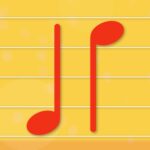

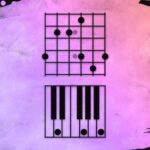

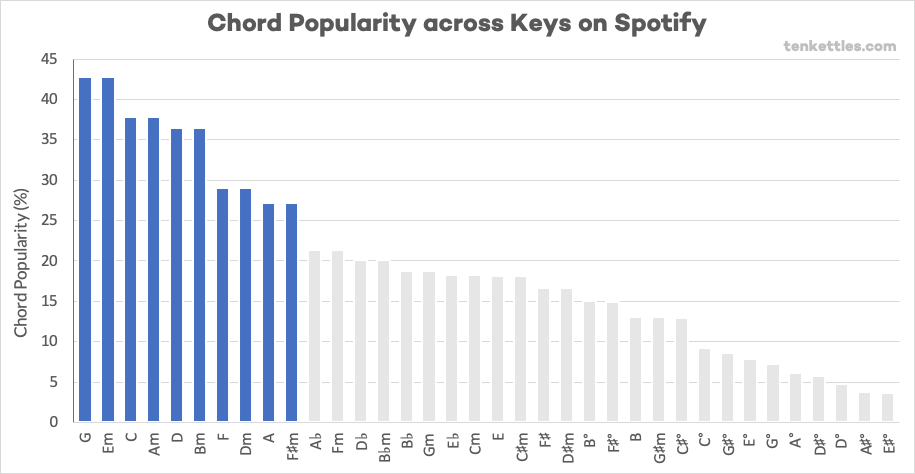
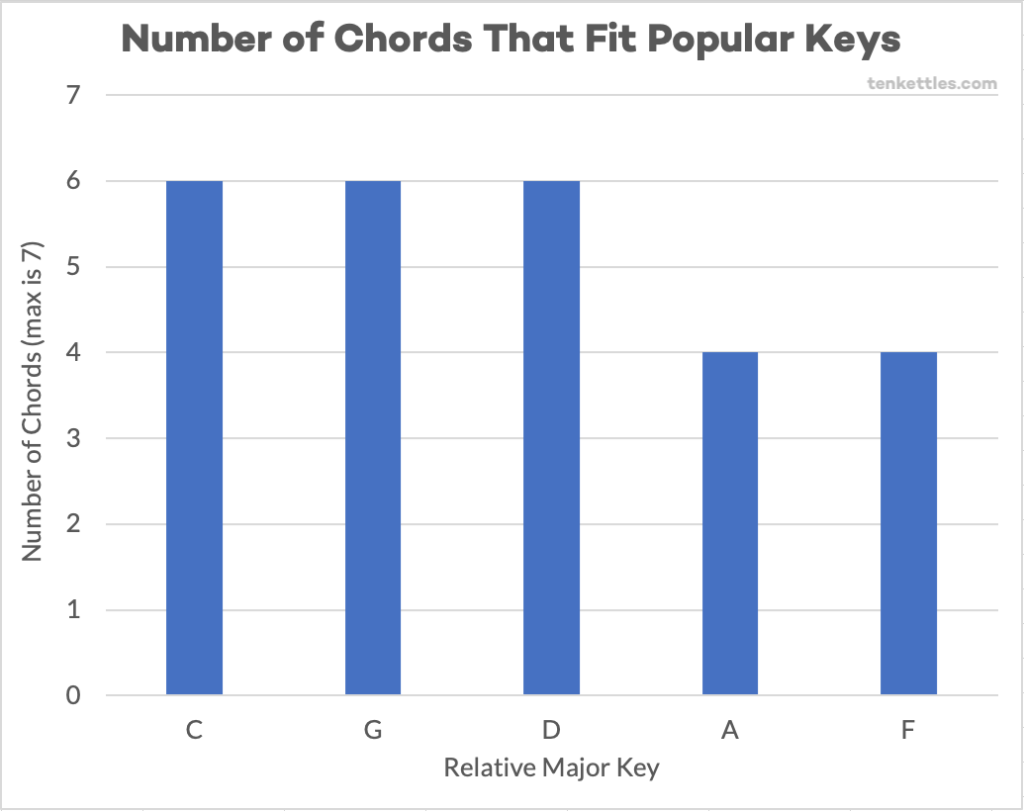
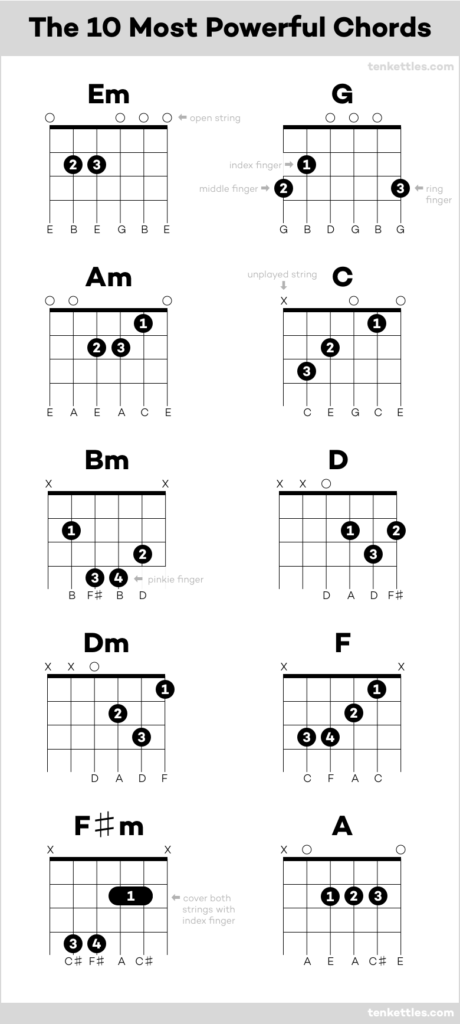
Comments